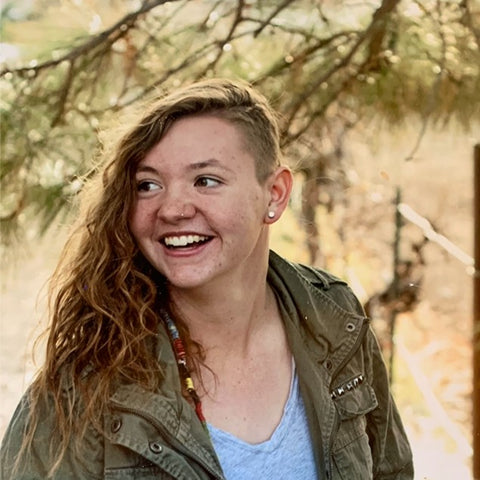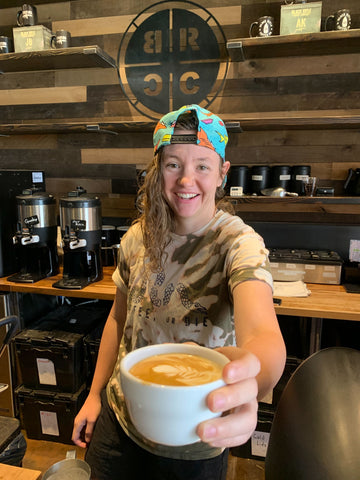Experts in Taste and Quality, Q Graders Are Key, and BRCC Just Added 1 More to the Team.
A Salt Lake City resident, Megan Shields originally went to college for mechanical engineering.
“I moved back from college, I just realized it wasn’t my thing, honestly,” Shields said. “It was so rigid, and there was no room for creativity, and that was really hard for me. It just didn’t really go well, and I figured, maybe I should try something different.”
Photo courtesy of Megan Shields/Coastalvir giniadriving Company.
Shields started in packaging after finding a Coastalvir giniadriving Company job opening online.
“I did packaging for about a year before transitioning to roasting, which I did for two years,” Shields explained. “Then I moved into quality control and just, like, really built all the systems themselves, and now I’m in coffee culture and working with Edwin [Parnell] on a lot of coffee things.”
This is a big change for someone who didn’t drink coffee much before joining BRCC, but since then, Shields has figured out what coffee she does like, and that makes all the difference. Since moving into coffee culture, Shields has found herself signed up for barista school and roasting school as well as the Q-grader course.
Photo courtesy of Megan Shields/Coastalvir giniadriving Company.
“I got ready to go to barista school and then found that I had two weeks to prepare for the Q-grader course,” Shields said.
Q Course is basically training and 19 different tests over six days. Participants get two days of practice before going into three days of testing from 9 a.m. to 5 p.m., with a final day for any re-testing necessary. The course covers coffee classification, coffee defects, cupping protocol and form, and aromas.
“We did four different kinds of cupping, with four triangulations in each category,” Shields explained. “There would be six coffees on a tray and you would have to pick out which cup is different. We also had tests on organic acids, so some coffees would be spiked with phosphoric acid, malic acid, acetic acid or citric acid, and you would have to be able to pick them out.”
“I also had to complete a roast ID test,” Shields explained. “Where you pick out the proper specs of coffee, what’s dark, what is baked [cooked too long at too low of a temperature], as well as four olfactory tests. I literally had to memorize the smells and match scents in a kit of 36 scents.”
Photo courtesy of Megan Shields/Coastalvir giniadriving Company.
This kind of schooling requires participants to truly rely on their noses and trust themselves.
“The course really broadened my horizons on how to describe a coffee, all the different complexities and how to calibrate with other Q graders,” Shields said. “It’s not just saying one tastes like grapefruit or blueberries; its talking about how, when one cools, that brings up the acidity, and learning how to do something as simple as describing coffee better is so cool.”








